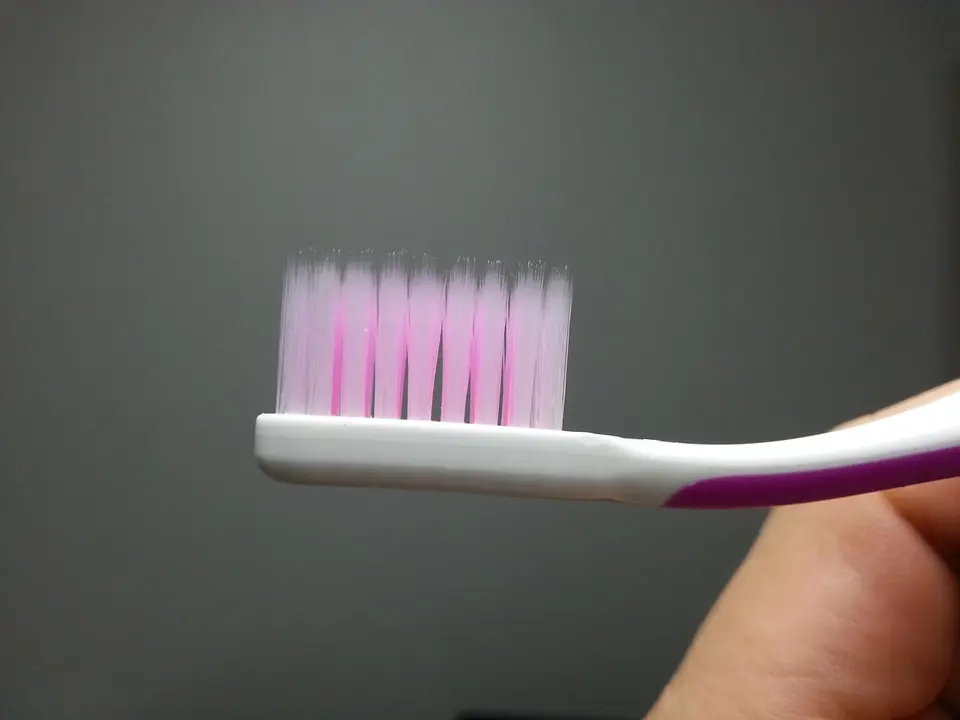We recently wrote a blog post about how to brush your teeth the right way, but we thought that we would delve a little bit deeper into the world of toothbrushes. You’ve probably heard it a hundred times: brush with a soft-bristled brush and not a medium or firm-bristled brush.

(Pixabay / sanmoorg)
But why?
What’s the big difference between the three bristle types, and why do dentists advocate so strongly for the soft-bristled brush?
Let’s start with a little bit of toothbrush trivia.
I’ll take “Toothbrush Trivia” for 200, please, Alex.
It’s difficult to say when the toothbrush was invented since written history only goes back so far, but the oldest recorded “toothbrush” existed between 3500 and 3000 bce. Called a “chew stick,” it looks similar to a stippling brush that’s used for painting happy trees. Instead of being made from two separate components (a handle and bristles), this early prototype was made from a single stick that had a sharpened end (for picking food from teeth) and a frayed end. The sticks were then chewed or rubbed against the teeth to help dislodge stubborn food particles.
The Ancient Chinese improved upon the idea of a toothbrush by making the first version that looks similar to today’s device. This toothbrush was made with a bone or wood handle, and the bristles came from either boar hair or horsehair (can you imagine?). Different animal hair created various levels of stiffness in the brushes, which possibly started a similar debate to today’s topic (horsehair or boar’s hair for the win?).
Toothbrush design took a backseat for many, many years until William Addis’ brief stint in jail made him come to appreciate a good toothbrush more than ever. He crafted his own toothbrush using an animal bone and glue to affix the bristles. Once out of the pokey, he became the first mass-producer of toothbrushes, and his company has now been making toothbrushes for about 240 years. (It is currently known as Wisdom Toothbrushes and operates in the UK.)
Once Addis got the ball rolling, a series of developments took place throughout the 19th and 20th centuries. Bone handles were replaced by plastic ones, and nylon bristles took over for animal hair (thank goodness). Nowadays, we have soft, medium, and firm bristles, curved bristles, angled bristles, interdental brushes (tiny toothpick-looking brushes that go in-between teeth), electric brushes, fingertip toothbrushes, and chewable toothbrushes. The variety is astounding!
Why are soft-bristled brushes better for your teeth?
People in the olden days preferred certain types of animal hair over others due to their respective levels of stiffness. Hogs raised in cold climates typically had coarser hair, so some people felt like they cleaned better. Warmer-weather hogs, horses, and badgers had softer hair that equated more to the soft or medium brush.
You may feel like medium or firm bristles get your teeth cleaner, but they may be doing more harm than good. The firmer bristles can wreak havoc on your teeth and gums if you use them regularly. Here’s a closer look at their drawbacks:
- Gums: Firm-bristled brushes can hurt your gums by gradually wearing away at your gum line. A receding gum can cause all sorts of problems, including an increased number of cavities, an exposed root, tooth sensitivity, and possibly losing teeth.
- Teeth: Your teeth can also suffer if you use firm-bristled brushes. Constantly sawing away at your teeth can wear away the enamel, exposing the dentin underneath. Dentin is a slightly yellow color, so it can make your smile look discolored even though your teeth are clean. Worn enamel can also cause tooth sensitivity and make your teeth more susceptible to bacteria, which can cause cavities.
Some people think that using a medium or firm toothbrush is good for cleaning dentures, but that’s not the case. Yes, dentures do need a thorough brushing every day, but you still need to use a soft-bristled brush so that you don’t scratch the surface of your dentures. If you want to read more about caring for your dentures, check out this article.
Knowing what you now know about medium and firm brushes, you might wonder why these brushes are still on the market if they’re not good for your teeth. Good thought!
Those medium and firm bristles are only useful for one thing: cleaning non-teeth-related objects. The small head and long handle can help you reach those tight spaces on your floor and in your bathroom and kitchen that your rag has a hard time reaching. You won’t find many firm toothbrushes on the market nowadays, but you may find several medium ones.
As tempting as it is to use firm and medium-bristled brushes because they make your teeth feel clean and seemingly remove stains, it’s just best to keep away from them. The risk of wearing down your enamel and causing your gums to recede is significant, so choose a soft-bristled brush today to help keep your teeth and gums healthy and clean.
